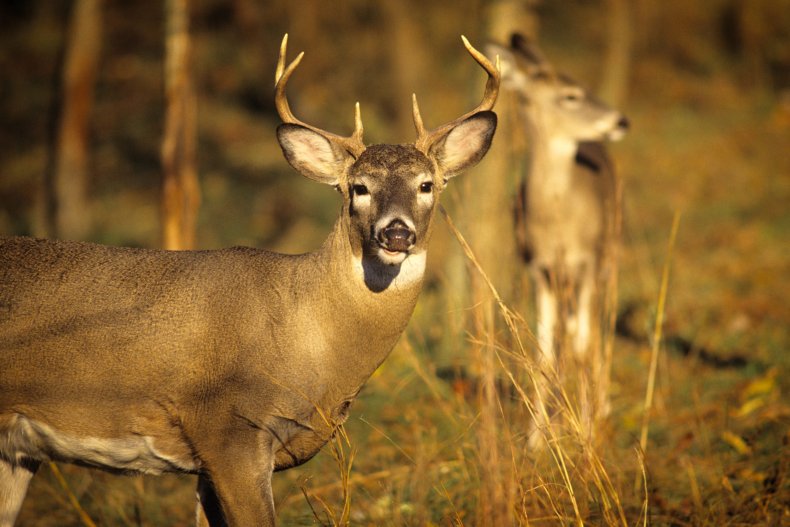One-third of white-tailed deer, a familiar sight on US lawns and golf courses, in the north-eastern United States have antibodies against SARS-CoV-2 — a sign that they have been infected with the virus.
The findings, revealed by an analysis of samples collected after the pandemic began, represent the first detection of widespread exposure to the virus in a population of wild animals, says Arinjay Banerjee, a virologist at the University of Saskatchewan in Saskatoon, Canada. The results are reported in a preprint posted on bioRxiv on 29 July1. They have not yet been peer reviewed.
Earlier peer reviewed analysis published in March 2021 in the Journal of Virology confirmed that deer did shed the virus by the nasal secretion and feces.
Researchers say the rapid exposure of a large number of animals to the virus is concerning, but that more studies are needed to assess whether the deer can infect each other — and other species — in the wild. “It’s an intriguing observation but still needs to be interpreted with caution,” says Aaron Irving, an infectious-diseases researcher at Zhejiang University in Haining, China.
The crucial questions are “how the virus spread to deer and if it will spread from infected deer to other wildlife or to domestic livestock such as cattle”, says Linda Saif, a virologist at the Ohio State University in Wooster.
The deer next door
White-tailed deer (Odocoileus virginianus) are abundant in North America, especially near urban centres in the eastern United States. Previous laboratory experiments have shown that the deer can become infected with SARS-CoV-2 and transmit the virus to other deer2. In the wild, these deer live in small herds, which means that the virus could spread naturally from an infected animal.
Researchers are concerned about the emergence of new animal ‘reservoirs’ — animal populations that harbour SARS-CoV-2. A pool of infected animals could provide a refuge where the virus could evolve in ways that threaten vaccine efficacy. A reservoir could also allow the virus to spread to other species and back to people, even after the pandemic subsides. Saif has documented other coronaviruses jumping between species. “Similar spillover into wildlife may now be occurring worldwide,” she says.

To assess that risk, Susan Shriner at the US Department of Agriculture (USDA) in Fort Collins, Colorado, and her colleagues tested 385 blood samples collected as part of regular wildlife-surveillance activities between January and March 2021 in four US states — Michigan, Pennsylvania, Illinois and New York. They found that a striking 40% of the samples contained SARS-CoV-2 antibodies, which are produced in response to infection. None of the surveyed deer showed signs of illness.
The researchers’ testing of archived samples also turned up antibodies in 3 samples from early 2020, when SARS-CoV-2 was beginning to circulate in the United States. All told, one-third of the 2020 and 2021 samples had antibodies for the virus.
“Given the percentage of samples in this study that had detectable antibodies, as well as the high numbers of white-tailed deer throughout the United States and their close contact with people, it is likely that deer in other states have also been exposed to the virus,” says a spokesperson for the USDA.
“The data strongly suggest that this deer species was infected with SARS-CoV-2 at some point in time,” Banerjee says. But the researchers did not test the animals for viral RNA, which would be needed to establish whether they are an animal reservoir, he says.
Unknown sources
The real mystery, says Banerjee, is how the deer were exposed. It could have been through contact with people, other animals or even contaminated wastewater. “If there is a common source of exposure for the deer, then likely the same source can expose other animals.”
The results stress the importance of surveying deer, as well as their predators and other animals that have close contact with deer, for SARS-CoV-2, the researchers say.
doi: https://doi.org/10.1038/d41586-021-02110-8
References: 1.Chandler, J. C. et al. Preprint at bioRxiv https://doi.org/10.1101/2021.07.29.454326 (2021).
Source: Nature, 2 August 2021
Leave a Reply
You must be logged in to post a comment.